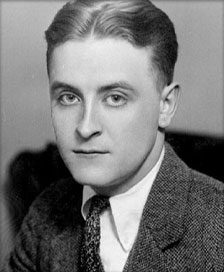Behind them on the lawn was a larger crowd—butchers and bakers in their aprons, fat women with folded arms, thin women holding up dirty children so that they might better see, shouting boys, barking dogs, horrible little girls who jumped up and down shouting and clapping their hands.
Behind these, in a sort of outer ring, stood the old men of the village, toothless, musty-eyed, their mouths open, their gray beards tickling the tops of their canes. Over behind them, the setting sun, blood-red and horrible, played on three hundred twisting shoulders.
After the burst of noise that succeeded my appearance, a silence fell—a deep hush, pregnant with significance—and out of this hush came a dozen voices from the men with notebooks in front of me.
“Jenkins of the Toledo Blade!”
“Harlan of the Cincinnati News!”
“M’Gruder of the Dayton Times!”
“Cory of the Zanesville Republican!”
“Jordan of the Cleveland Plain Dealer!”
“Carmichael of the Columbus News!”
“Martin of the Lima Herald!”
“Ryan of the Akron World!”
It was weird, uncanny—like some map of Ohio gone mad, with the miles refusing to square and the towns jumping about from county to county. My brain quivered.
Then again the hush fell. I noticed a commotion in the middle of the crowd, a sort of wave or eddy floating down the center like a thin line of wind blowing through a wheat field.
“What do you want!” I cried hollowly.
Like one voice came the response from half a thousand throats.
“Where is Cosgrove Harden?”
It was out! The reporters swarmed about me, pleading, threatening, demanding.
“—kept it pretty close, didn’t you—almost didn’t leak out—pays to pay bills—won’t he give an interview—send us the old faker—”
Then that strange eddy in the field of people suddenly reached the front and died out. A tall young man with yellow hair and stilt-like legs emerged dynamically from the crowd and dozens of willing hands propelled him forward toward me. Up to the porch he came—up the steps—
“Who are you?” I shouted.
“Name’s Elbert Wilkins,” he gasped. “I’m the fella that told.”
He paused and his chest swelled. It was his great moment. He was the immortal messenger of the gods.
“I recognized him the day he came! You see—you see—” We all swayed forward eagerly. “I got his I.O.U. for three dollars and eighty cents he lost to me at draw poker, and I want my money!”
I am a publisher. I publish any sort of book. I am looking for a book that will sell five hundred thousand copies. This is the season for novels with a psychic turn.
If possible I would prefer something by a fervent materialist about a wealthy clubman and a dark apachess—or something about love. Love is a sure thing—it takes a living man to love.
Notes
Fitzgerald sent a manuscript with a letter to Ober (2 June 1920): this story was “a plot that Sell particularly wanted for Harps. Baz and which I promised him.” There is no evidence that the story was actually offered to Harper’s Bazaar, and that magazine published no Fitzgerald stories during his lifetime.
Ober obviously offered it other places, because on 17 July 1920, Fitzgerald wrote concerning the story again: “If ‘The I. O. U.’ comes back from the Post I wish you’d return it to me as I think I can change it so there’ll be no trouble selling it.”
No correspondence survives indicating whether Fitzgerald resubmitted the story in a new version or with a new title. There is not even a record of what magazines Ober offered it to.
However, the manuscript and a typescript survive, and a note attached to the typescript shows that at some time (probably after Fitzgerald’s death) Ober reworked or considered reworking the story in an attempt to make it salable.
Sotheby’s 2012 sale:
—Autograph manuscript signed (“F. Scott Fitzgerald”), titled “The I. O. U.,” n.p., c. 1920, 42 pages (11 x 8 1/2 in.; 279 x 215 mm) in pencil with numerous additions, deletions and emendations in the author’s hand; first and last page with marginal chips and tears, marginal rust stains from paper clips, pin holes in upper left corners of all leaves, some marginal browning on a few leaves
—Typescript of the same story, n.p., c. 1920 (inscribed in pencil in an unidentified hand “written before 1928”), 25 pages (10 1/2 x 8 1/8 in.; 267 x 206 mm) with 3-hole punch in left margins; upper right corner of first leaf torn away (not affecting text), first and last leaf with small tears and chips to left margin; occasional soiling.
The typescript is accompanied by a typed note from Fitzgerald’s agent, Harold Ober, giving a brief telegraphic synopsis of the story.
This note, intended to accompany the typescript when it was submitted to magazine editors, captures the tone of the story: “Cleverly written story. Almost a satire on publishing business.
Told by a publisher. He brings out book by famous psychic research man, purporting to be in communication with his nephew killed in War (WWI). Publisher goes to Ohio to visit author. The nephew who has been in prison camp arrives at same time.
Girl he was engaged to also there. Both are angry at author & publisher. Book is selling at great rate. Shows nephew dancing with angels in filmy garments.
Publisher offers them money to keep quiet for a while – but native of town arrives. Recognizes nephew because he owes him $3.85 lost at poker. Publisher decides to publish only love stories and mysteries. HO.”
The manuscript and typescript has been sold to the Yale University.
The end
